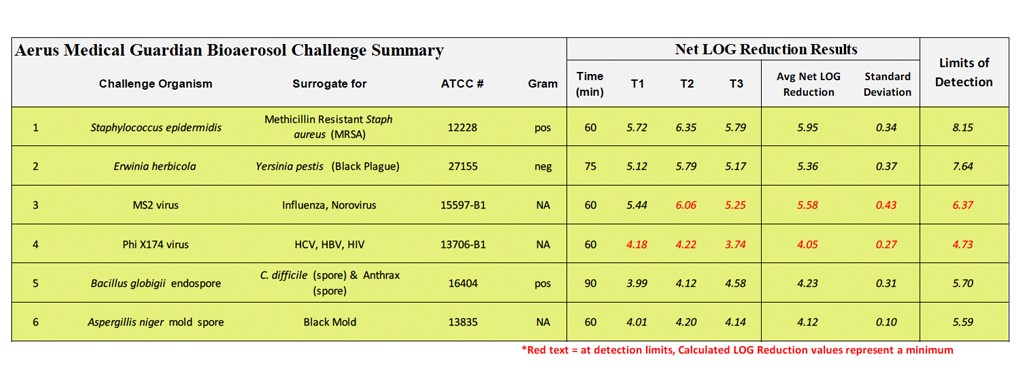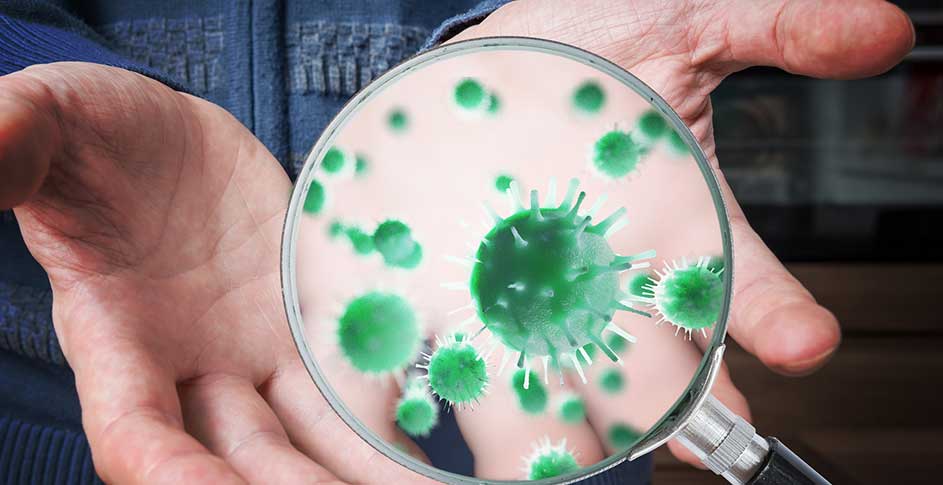Spend an hour researching air purification options, and you'll be swiftly served your search engine's favorite bowl of alphabet soup. While the carrot halves of HEPA and the peas of PCO sink out of the reach of your spoon, 4 soggy, gelatinous letters will inevitably float to the top: PECO.
As what floats to the top of a bowl of soup is not necessarily the most nutritious, what floats to the top of a search engine is not necessarily the most effective technology. In this article, we'll explain how PECO operates in comparison with our own ActivePure Technology. We'll also propose a theory as to why it has undeserved (in our opinion) pride of place on the menu.
A Review of ActivePure Technology
It would be politer of us to introduce the newcomer first, but—to better understand PECO—a review of how ActivePure Technology works might be helpful. ActivePure Technology is a revolutionary air and surface purification solution based on a concept used to scrub ethylene from the air during space travel (itself based on an earlier concept called photocatalytic oxidation, or PCO). ActivePure Technology shines a shielded UV light on a honeycomb matrix coated with a catalyst. This creates a reaction that turns water vapor into the following molecules: (O2⁻), (H2O2), (HO⁻), and (HO⋅). These molecules pull apart bacteria, viruses, mold spores, and volatile organic compounds in the air and reduce the aforementioned pathogens on surfaces. Unlike its predecessor PCO, ActivePure Technology accomplishes the complete breakdown of VOCs1 without the catalyst becoming saturated.
The most important fact to note here, for comparison with PECO, is that ActivePure distributes its molecules throughout the room, filling the entire space. This makes ActivePure an active (as opposed to passive) purification method.
What Is Photo-electrochemical Oxidation (PECO)?
PECO stands for Photo-electrochemical oxidation. It is the proprietary technology of a single company. Let's give them a fair shake by letting them describe the technology in their own words:
"The process of PECO works as light excites a nanoparticle coated filter, creating a chemical reaction on the surface of the filter that results in the creation of hydroxyl free radicals. These same radicals are used to kill cancer cells in radiation therapy. The free radicals oxidize pollutants at the surface of the filter and convert them into harmless elements like trace amounts of water and carbon dioxide. By innovative manipulation of the electron flow, this new photoelectrochemical oxidation (PECO) technology works orders of magnitude faster than conventional photocatalytic processes. The resulting high quantum efficiency produces a dramatic increase in hydroxyl radical production on the surface [of] the filter, greatly surpassing the limitations of traditional photocatalytic oxidation technologies (PCO)."
The key takeaway of this description is that PECO is a heavy modification of PCO technology that moves the catalyst to the surface of the filter itself. It appears that the goal of this modification is to confine the hydroxyl reactions to the filter chamber, turning the active technology of PCO into a passive technology.
Is PECO Effective?
 Let's compare PECO's and ActivePure Technology's test results. (Image credit: Getty/ FG Trade)
Let's compare PECO's and ActivePure Technology's test results. (Image credit: Getty/ FG Trade)
Yes, PECO itself appears to be effective. The technology has been tested by several outside organizations, and several medical-grade devices with PECO have even received FDA clearance as medical devices.
However, the fact that PECO itself works does not mean it works well in all the devices it is used in, specifically the devices sold for home use. For instance, Consumer Reports tested a PECO home purifier's ability to remove particulate matter from a test chamber. While PECO is not targeted toward removing particulate matter, this test was used to establish how much air was flowing through the machine. Based on lackluster results, the Consumer Reports test team estimated that the model of PECO purifier they tested couldn't handle a room larger than 100 square feet; for comparison, the average size of a one-bedroom apartment in San Francisco is 700 square feet. PECO's owners countered that the slower air flow can increase the "destruction efficiency," but we fail to see how this matters if microbes are not entering the chamber in the first place because of low airflow. (In fairness to the company that makes PECO, they do have test results that appear to show effectiveness in a larger space, as we shall see in the next section.)
Is PECO More Effective Than ActivePure Technology?
PECO is a passive technology because the disinfection takes place inside the reaction chamber. While this helps clean the filter, it eliminates the main advantage of photocatalytic oxidation—its ability to neutralize pathogens out in the room 24/7 rather than wait for them to pass through the device or its filter. In a world with ever-new infectious diseases, we need active rather than passive purification.
In addition to the disadvantage of being a passive technology, ActivePure has more promising test results.
PECO Commercial Unit vs. ActivePure Medical Unit
For instance, a test of a PECO unit reduced Coliphage φX174 (a common testing surrogate for more dangerous viruses) in the air by 98.7% in 24 hours. By comparison, the Aerus Medical Guardian reduced the same virus by over 99.99% in only 1 hour.2
For an even more startling comparison, the same laboratory (Aerosol Labs) tested both the ActivePure Medical Guardian and a PECO-based unit in 2 separate experiments. This lab used the same size test chamber (562 cubic feet) and the same bacteriophage (MS2 RNA virus) to test both units. After 60 minutes, the PECO unit's best log reduction (out of 4 tests) was 4.71 (or slightly under 99.999%) while the Aerus Medical Guardian's log reduction was 6.06 (or slightly over 99.9999%—below the detection limit when you factor in the standard deviation).3 This means that the ActivePure device neutralized over 10 times the number of viral particles.
PECO Medical Unit vs. ActivePure Medical Unit
You may think it is unfair of us to pit a small home unit vs. a medical grade unit, but PECO's medical unit had an even larger performance gap. After 1 hour, it reduced MS2 by only 99.9477%. This may be because the experiment tested only the filters used in PECO's medical unit and not the unit itself. It may also be because this experiment was performed under different conditions. Further data is required to draw a definitive conclusion.
PECO Commercial Unit vs. ActivePure Commercial Unit
Let's compare our relative effectiveness at reducing the virus on everyone's mind—SARS-CoV-2—using nonmedical units only. PECO has results showing it reduces SARS-CoV-2 below the detectable limit in slightly over 2 minutes under laboratory conditions. A device with ActivePure Technology (specifically the Aerus Pure & Clean) reduces SARS-CoV-2 below the detectable limit in less than 1 minute under laboratory conditions.4
 Net LOG reduction summary for the ActivePure Medical Guardian (Image credit: Aerosol Labs)
Net LOG reduction summary for the ActivePure Medical Guardian (Image credit: Aerosol Labs)
So Why Is PECO Ranked So Highly by Search Engines?
We'll give you a hint. Take a look at the design of their home purifiers: a smooth shape with barely any seams or corners, neutral colors, and smartphone pairing. If this wasn't enough of a hint as to the name of the horse to which their wagon is hitched, PECO purifiers come in "pro" or "mini." People who buy purifiers with PECO aren't just looking for clean air; they are buying an affirmation of their membership in a design-conscious technocracy.
If such symbolism is what you seek in an air purifier, buy PECO. If you are looking for a purifier that gets the job done *for* people who get the job done, we recommend going with ActivePure.
1 Aerus. (2019). "Aerus Medical Guardian Organic Oxidation Byproducts." Aerus.
2 ibid
3 Balarashti, et. al. (2019). "Efficacy of Aerus Medical Guardian Air System against Various Bioaerosols." [Unpublished Lab Study]. Aerosol Research and Engineering Laboratories.
4 Lawrence, William S. & Peel, Jennifer E. (2022). "ActivePure Air Purifier Against Respiratory Pathogens." [Unpublished Lab Study]. University of Texas Medical Branch.



